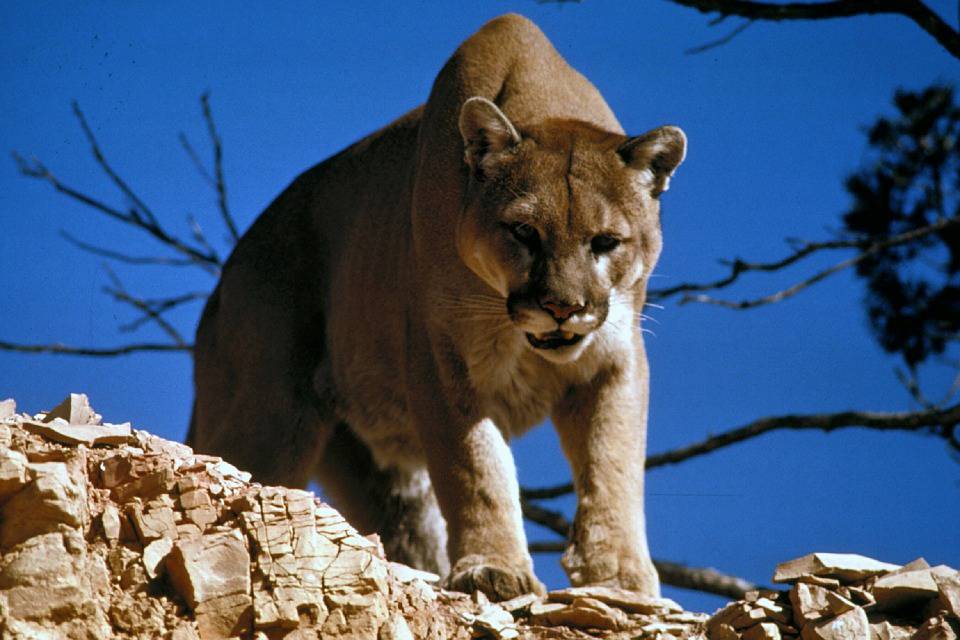 By Terry Messmer
By Terry Messmer
When you’re in the great outdoors, there’s a possibility you could encounter fur, feathers, fins, scales, skin, teeth, talons, claws, beaks, hooves, horns, antlers, or fangs. In addition are stingers, roars, coos, odors, tweets, bleats, bugles, bites, snorts, growls, hisses, and sometimes hugs.
From the smallest bug to the largest bear, human close encounters with wildlife, either accidental or intentional, can be both frightening and fascinating. Encounters with wildlife can occur in the wild, the parking lot of a local fast food restaurant, the park, on the highway, in backyards, and sometimes even in homes.
As human populations continue to grow, so will the demand for housing and outdoor recreation. Instead of building upward and smaller, there continues to be a trend of building outward and larger. This means more homes and developments are being built in areas that were once rural and provided habitat for wildlife.
Utah has the third highest percentage of public lands in the nation, with many areas just minutes from our front doors. As the demand for outdoor recreation increases, cities and towns are looking to create new outdoor experiences for residents by adding trails, green spaces, and bike paths in what is known as the urban-wildland interface. Although the interface can create new recreational opportunities, it can also create unintended safety risks. As we move into fall and temperatures become cooler, there will be increased wildlife movements as they seek food and shelter and as their young disperse.
So how can you balance the risks associated with living among wildlife? The Utah Division of Wildlife Resources, Hogle Zoo, and Utah State University Extension have developed the Wild Aware Utah educational program. The more you know about the wildlife living in your area, their behaviors, and how to respond to a close encounter, the better it will be for them and you. Consider these tips:
—Never approach or try to touch or feed wildlife.
—Remove attractants from your property, including pet food, water sources, bird feeders, and fallen fruit. Trim vegetation and close off crawl spaces to reduce hiding places.
—Never leave children or pets unattended.
—Keep dogs leashed, especially when on trails.
—Secure trash in a locked receptacle. When camping, keep a clean, odor-free site.
—Contain pets and livestock at night.
—Always hike, jog, or bike with a companion; make noise to alert wildlife of your presence.
If you do happen to encounter a wild animal, it is important to stay calm and not run away, though that is often our natural instinct. Consider these tips:
—Always give the animal a clear escape route. Do not crowd it; doing so could make it stressed and unpredictable.
—Hold pets and small children.
—Make yourself look as big as you can with your arms held up high, and be as loud as possible. Stomp your feet and clap your hands. Shout in a loud, authoritative voice. Throw sticks or rocks at the animal if it approaches.
—Do not turn your back. Face the animal and back away slowly.
—If you encounter a rattlesnake, stop and listen to where the rattle sound is coming from. Don’t jump or run. Slowly back away.
—If you are attacked, fight back. If a moose or deer knocks you down, curl into a ball, protect your head and lie still until the animal retreats.
Knowing basic facts about wildlife and taking a few simple steps can help prevent many common wildlife-related problems. For more information, visit the Wild Aware Utah website at wildawareutah.org, or contact me at terry.messmer@usu.edu.
Terry Messmer is a Utah State University Extension wildlife specialist.
Articles related to “Close encounters of the wildlife kind: Personal protection strategies”
Search for missing person with nondescript features continues
Utah Department of Natural Resources names Mike Fowlks Division of Wildlife Resources director



